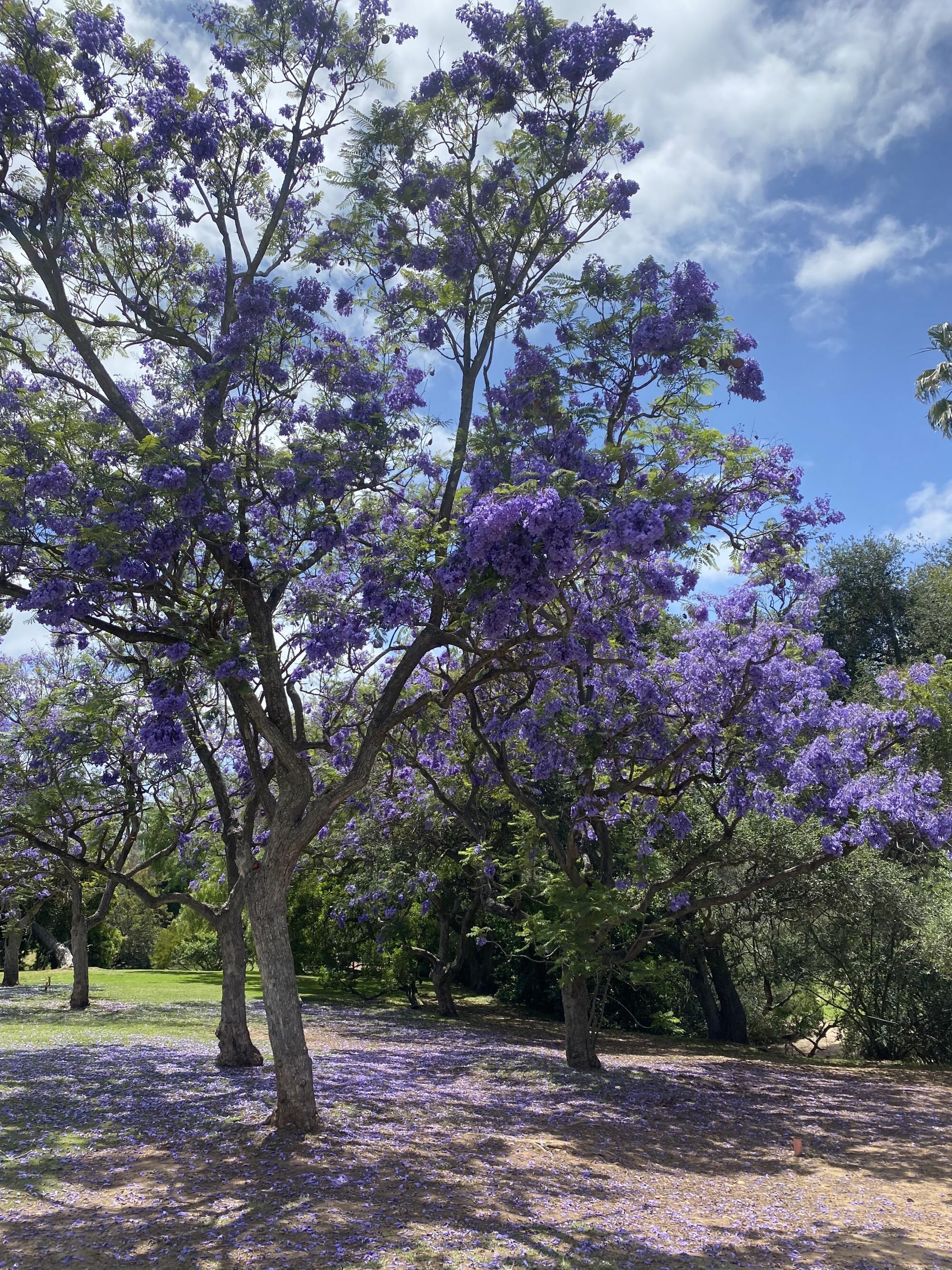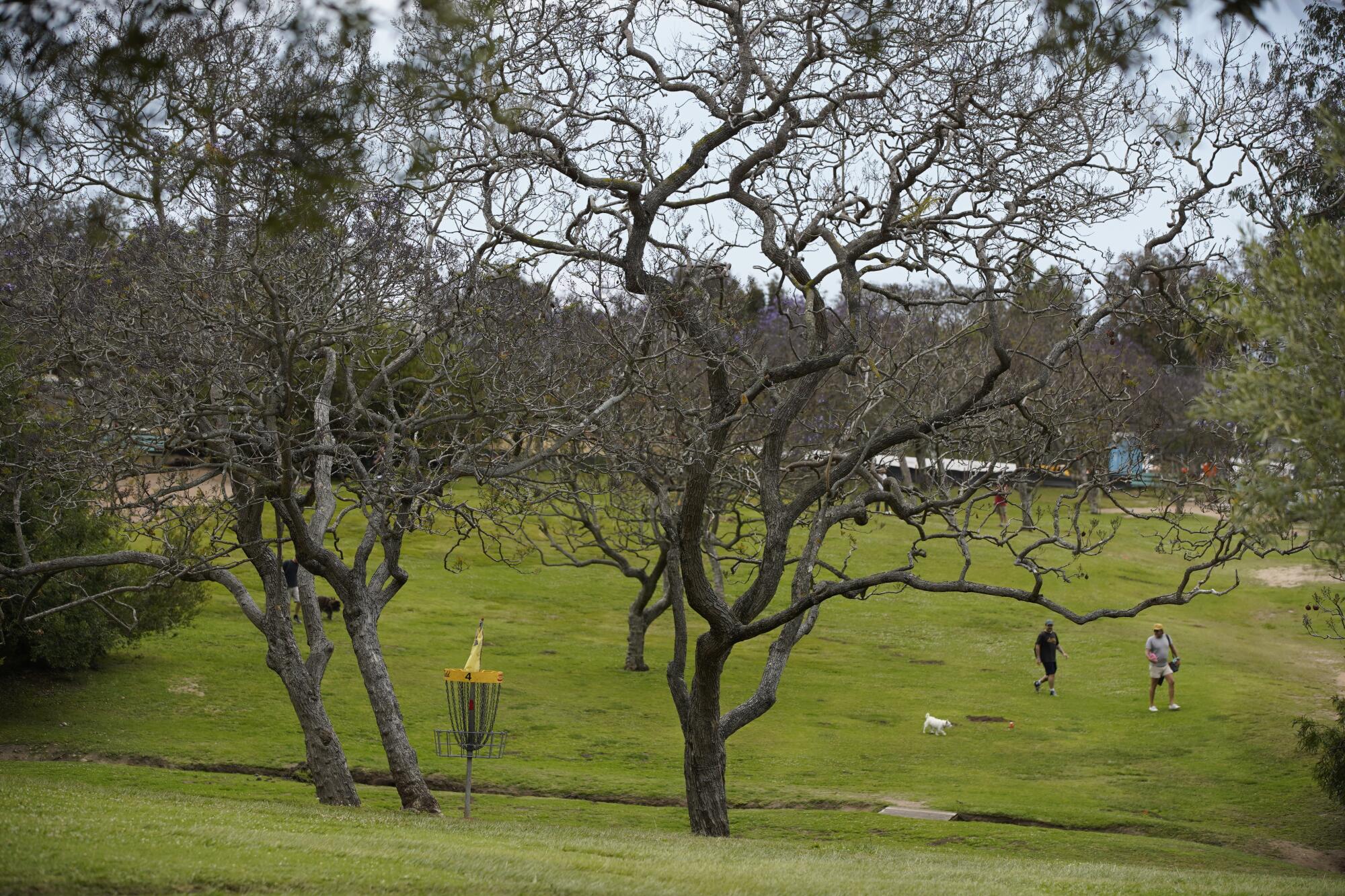
May gray and June gloom could be even gloomier this year.
To the chagrin of botanists, florists and spring-loving San Diegans throughout the county, the lilac-colored blooms of the jacaranda trees are late to explode, with experts predicting a later-than-usual flowering of the vibrant spring tradition.

“It’s variable,” said Brian Widener, a forester for the city of San Diego. “Sometimes we have years where the blooms come out in April, and sometimes they don’t come out till June.”
This time last year, dozens of jacarandas at the Morley Field Disc Golf Course in Balboa Park were in full bloom, creating an aromatic, light purple canopy throughout the course.
As of Thursday, many of those same trees are barren, with only a few sprouting green leaves and buds.
“Normally, they would be blooming by now,” said Armando Lopez, a groundskeeper at Morley Field. “Some of them look like they’ve just shrunk in on themselves, just waiting out the rain.”
Lopez, who has been playing disc golf at Morley Field since 2008, said he and the course’s staff were recently discussing the lack of blooms and possible reasons for the delay.
“We all thought it was because of the rain we’ve been having,” Lopez said. “And that we just haven’t had enough sun to warm up the course.”

Chuck Morgan, a certified arborist and project manager for Tree San Diego, a nonprofit that works to improve the urban forests in disadvantaged communities, said the latter is to blame for the flowers’ late arrival.
Warm weather prompts jacaranda trees to start producing the hormones responsible for new buds, leaves and eventual flowers.
“You’re going to see some delay in flowering because we haven’t seen the warm temperatures that we typically have this time of year,” Morgan said. “While the gray weather is typical — since we’re in ‘May gray’ and ‘June gloom’ — the temperature has been lower.”
According to the National Weather Service, San Diego typically sees temperatures between 60 and 70 degrees in May. This year, temperatures ranged from 58 to 66 degrees.
April was colder as well, with temperatures ranging from 54 to 66 degrees, when a range of 57 to 69 degrees is the norm, weather data show.

Morgan said the lower average temperatures have impacted not just early-flowering trees such as jacarandas, magnolias and cherries, but also some fruit crops, including plums, peaches and nectarines, that rely on extended, warm spring days.
However, jacaranda enthusiasts should not be too worried. The colder temperatures will not hurt trees and plants unless temperatures drop below freezing, which is unlikely.
“A positive of this is we could see a longer bloom,” Morgan said. “It may be a full month of blooms June and possibly some in July.”
Get Essential San Diego, weekday mornings
Get top headlines from the Union-Tribune in your inbox weekday mornings, including top news, local, sports, business, entertainment and opinion.
You may occasionally receive promotional content from the San Diego Union-Tribune.
